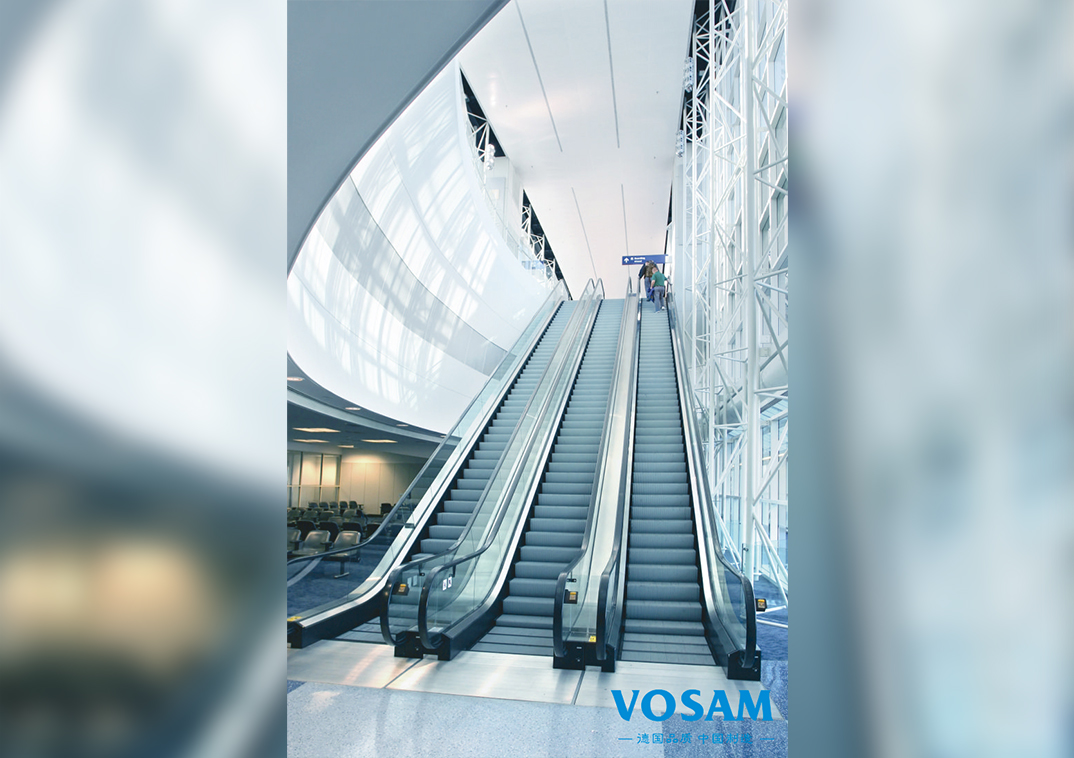Regular maintenance of escalators is the key to ensure their long-term stable and safe operation. Conventional escalator maintenance usually includes the following aspects:
1. Inspection and maintenance of mechanical parts
Drive system: Check the working status of drive components such as motors, reducers, transmission devices, etc. to ensure that there is no wear, looseness or abnormal noise. It is necessary to regularly check whether the lubricating oil is sufficient, and add or replace the lubricating oil if necessary.
Chains and gears: Check the wear of chains and gears to ensure that they run smoothly. The tightness of the chain needs to be adjusted to the appropriate position to avoid failures caused by over-tightening or over-loosening.
Step system: The step is the core component of the escalator, and the gears, slides and support systems of the step need to be checked. If the surface of the step is found to be worn or damaged, it needs to be replaced in time.
Handrail: The handrail should ensure that the tension is moderate, and regularly check for wear, cracks or foreign objects stuck, and replace the handrail if necessary.
2. Inspection of electrical system
Control system and sensor: Check whether the escalator control system and its sensors (such as speed sensor, position sensor) are working properly to ensure that the functions such as automatic start and stop, speed adjustment, etc. are correct.
Electrical wiring and power supply: Check whether the electrical wiring, switches, transformers, etc. are aging, poor contact or short circuit. Clean electrical components regularly to prevent dust or dirt from affecting electrical performance.
Emergency stop system: Ensure that the emergency stop button and safety trigger system are working properly. Once an emergency occurs, the parking mechanism can be triggered quickly.
3. Inspection of safety devices and emergency systems
Guardrails and pedals: Check whether the guardrails, pedals and guard plates of the escalator are firm to ensure that they are not loose or damaged to avoid harm to passengers.
Access control system and emergency stop button: Ensure that the access control system and emergency stop buttons at both ends of the escalator are working properly. Test the function of the emergency stop button to ensure that the escalator can be stopped in time when danger occurs.
Anti-slip device: Check whether the anti-slip texture on the pedal surface is clear and whether there is wear or aging to avoid slip accidents.
4. Monitoring and testing of escalator operation status

Operation speed and load: Regularly test the escalator's operating speed to ensure that it meets the specified standards and avoid affecting passenger safety and comfort due to excessive speed or slowness. It is also necessary to test the maximum load capacity of the escalator.
Step stability: Check whether the steps remain stable during operation to avoid safety hazards caused by step tilt or excessive fluctuations.
Noise and vibration: Detect whether there is excessive noise or abnormal vibration during escalator operation, which may be a signal of loose or worn mechanical parts.
5. Cleaning and dust removal
External cleaning: The appearance of the escalator needs to be cleaned regularly, especially the handrails, pedals, glass guardrails and other parts. Keeping it clean can not only extend the service life of the escalator, but also improve the passenger experience.
Internal cleaning: Regularly clean the dust and debris inside the escalator, especially in important parts such as steps, gears, chains, etc., to avoid dust and debris affecting the operation of the machine.
6. Crowd flow and usage assessment
Crowd flow monitoring: According to the frequency of use and the flow of people on the escalator, assess whether the speed, running time and other settings of the escalator need to be adjusted to optimize energy efficiency and user experience.
Load assessment: Observe the load of the escalator to see if it is often in a high-load state, and consider whether more escalators need to be added in high-flow areas to divert the crowd.
7. Regular professional inspection and testing
Structural safety inspection: Conduct a detailed inspection of the structural safety of the escalator every year or regularly, including the frame, support structure, escalator gap, etc., to ensure that the escalator will not fail due to structural problems after long-term use.
Fire protection and emergency evacuation function test: Regularly check whether the fire protection facilities of the escalator are effective and whether the emergency evacuation passage is unobstructed.
8. Record and document management
Maintenance log: After each maintenance, record the details of all inspections, repairs, and parts replacements. Including date, execution personnel, work content, etc., so as to track historical problems and discover potential problems in a timely manner.
Quality tracking: Ensure that each maintenance meets the established standards through regular quality control and evaluation.
Regular maintenance and inspection can not only improve the operating efficiency of the escalator, but also detect potential problems in time before failure occurs, thereby avoiding sudden accidents and ensuring passenger safety.











